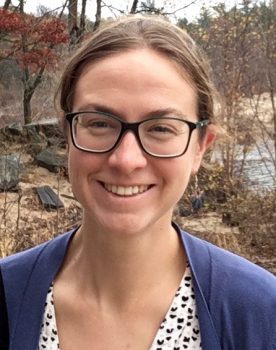Q & A with Sara Brostrom
 Why did you decide to pursue a Master of Marine Affairs?
Why did you decide to pursue a Master of Marine Affairs?
I wanted to understand issues facing the marine environment from a perspective based on different disciplines while developing a career in marine policy.
Why did you decide to come to UW’s SMEA for graduate school?
There are a handful of reasons I decided to become a SMEA student. First, an interdisciplinary method aligns with how I think we should approach environmental issues both locally and globally. Second, UW has an overwhelming amount of opportunities, courses, departments, and lectures. Third, as a result of my background in K-12 education, I was intrigued by the opportunity to seek teaching assistant positions in departments across the university.
Are you doing a thesis or capstone project? If thesis, what are you writing your thesis about and why? If capstone, what is the project about?
I’m contributing to the capstone project at SMEA this year. The capstone is a partnership with NOAA that involves investigating the socioeconomic and cultural impacts of harmful algal blooms on coastal communities. Through our research we aim to build the foundation for a framework that will be used to inform policy on the vulnerability levels of coastal communities impacted by HABs.
What has been your favorite class at UW so far? Why?
Upon entering Ryan Kelly’s SMEA 515 US Coast and Ocean Law course, I knew nearly nothing about law nor how to apply environmental law to the marine environment. However, I walked away from this course not only with a greater understanding of law, but also with methods to make law more approachable.
What do you like most about SMEA?
I like the interdisciplinary aspects of SMEA. Much of my previous experiences in formal education have been discipline focused in either biology or education. Environmental problems need collaboration from many disciplines and perspectives in our society, and I believe that the interdisciplinary approach of SMEA gives me the opportunity to practice this.
What’s it like to live in Seattle? What do you do in your spare time?
You are surrounded by delicious food, coffee and beer, the winter is dark, rainy and green, the summer is wonderful, and you get live along the Puget Sound and near spectacular locations such as Mt. Rainier National Park, Olympic National Park, and North Cascades National Park. In my spare time, I have a longstanding goal to spend more time exploring Seattle and the sounding area. I spend time with my family and friends, run, and practice my guitar.
If you could design your ultimate job after graduating, what would it be and why?
My dream job would be to find someone willing to pay me to collaborate with researchers on ways to make their work approachable, relevant, and available to public school students. Updated science slowly meanders its way to the K-12 setting, and I believe that this can change.
What is your favorite form of marine life, and why?
It’s hard to grow up in the 90’s in Washington and not be a fan of salmon. I still vividly remember the state funded program that allowed my fifth grade self to watch salmon eggs morph into salmon that we released in a nearby stream. I found the entire process amazing. Six years later in Alaska, I witnessed my first sockeye salmon run. At that moment I was certain that salmon are amazing creatures.